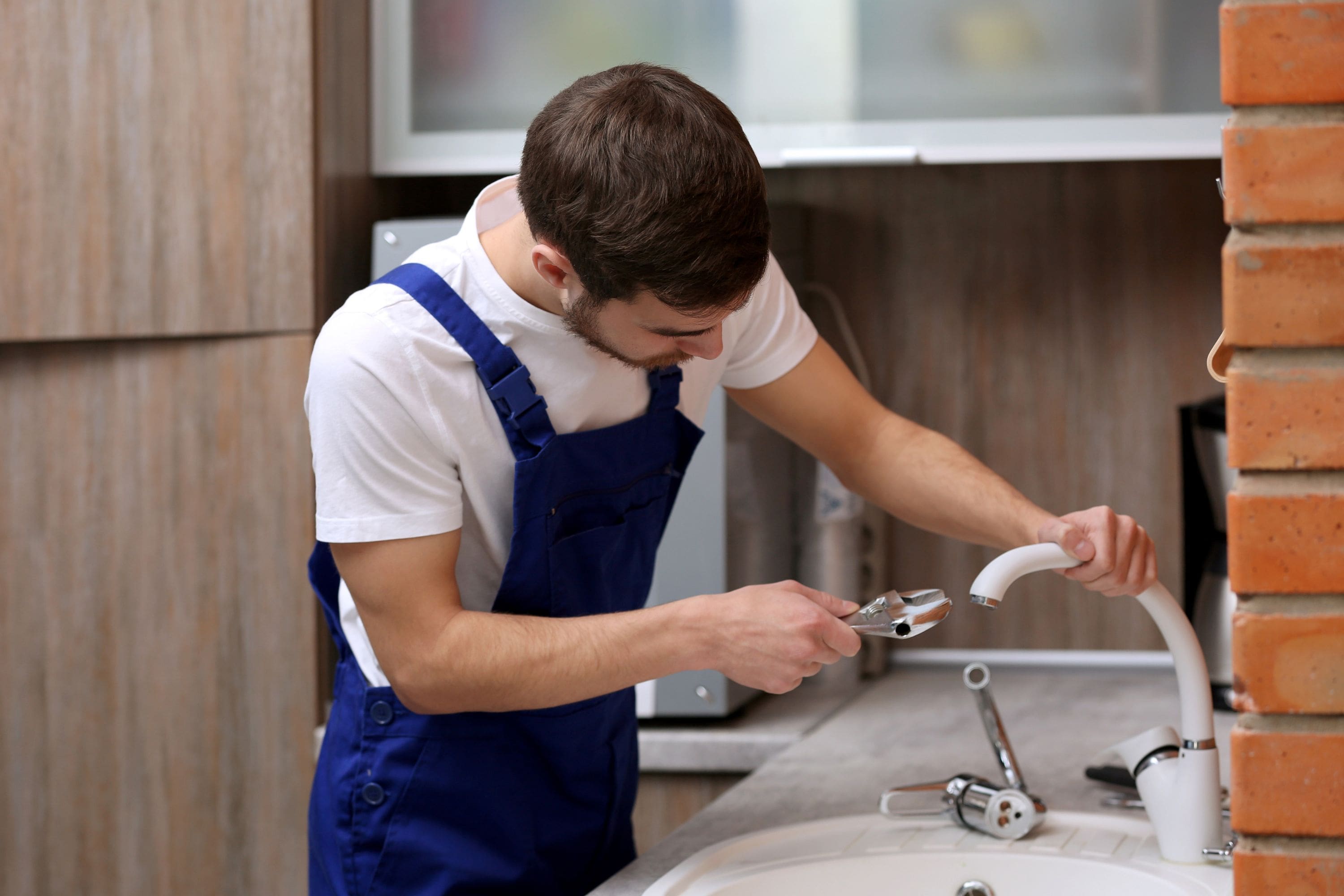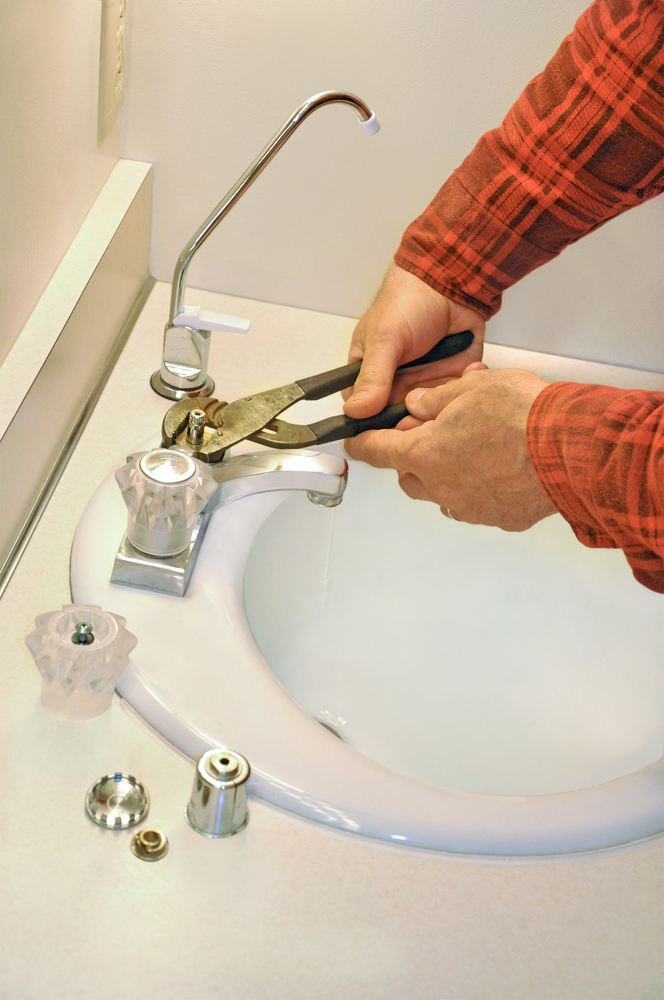Motives Why It's Critical to Fix a Dripping Faucet
Motives Why It's Critical to Fix a Dripping Faucet
Blog Article
Presented here underneath you might get a good deal of reliable resources concerning Should I Repair or Replace a Leaky Faucet?.

Dripping faucets may seem like a small hassle, however their effect goes beyond just the inconvenience of the sound. From drainage to sustaining unnecessary monetary costs and wellness risks, disregarding a dripping tap can bring about various repercussions. In this post, we'll explore why it's crucial to resolve this common family problem promptly and successfully.
Wastefulness of Water
Environmental Influence
Leaking faucets contribute dramatically to water wastefulness. According to the Epa (EPA), a single faucet leaking at one drip per second can lose greater than 3,000 gallons of water annually. This not only pressures water sources yet likewise impacts ecological communities and wild animals dependent on them.
Financial Expenses
Boosted Water Expenses
Past the ecological impact, trickling faucets can pump up water expenses considerably. The accumulated waste gradually translates right into higher energy expenses, which might have been prevented with timely repair services.
Potential Home Damages
Moreover, long term trickling can result in damage to components and surface areas bordering the tap. Water build-up can trigger staining, deterioration, and even architectural issues if left unattended, leading to additional repair work costs.
Health Worries
Mold and Mold Development
The constant existence of wetness from a leaking tap creates an ideal environment for mold and mildew growth. These fungis not just jeopardize interior air quality however also pose health and wellness risks, particularly for people with respiratory conditions or allergies.
Waterborne Conditions
Stagnant water in leaking taps can end up being a breeding ground for microorganisms and various other pathogens, raising the risk of waterborne illness. Pollutants such as Legionella bacteria grow in stagnant water, potentially leading to serious diseases when consumed or breathed in.
Do it yourself vs. Specialist Fixing
Pros and Cons of DIY Repair Work
While some may attempt to repair a dripping faucet themselves, DIY repair work feature their own set of difficulties. Without correct knowledge and devices, DIY attempts can exacerbate the concern or cause insufficient repairs, lengthening the issue.
Advantages of Working With a Specialist Plumber
Working with an expert plumber makes sure that the underlying cause of the trickling tap is addressed successfully. Plumbing professionals have the knowledge and equipment to identify and repair tap issues efficiently, conserving time and reducing the danger of further damage.
Step-by-Step Guide to Fixing a Dripping Faucet
Devices Needed
Before trying to fix a trickling faucet, gather the needed tools, including a flexible wrench, screwdrivers, substitute components (such as washing machines or cartridges), and plumber's tape.
Typical Faucet Issues and Their Solutions
Determine the type of tap and the particular concern causing the drip. Usual troubles consist of worn-out washing machines, corroded shutoff seats, or faulty O-rings. Describe supplier directions or online tutorials for detailed support on repairs.
Preventive Measures
Routine Upkeep Tips
To avoid leaking faucets, carry out routine upkeep such as cleaning aerators, examining for leakages, and changing damaged parts promptly. Furthermore, take into consideration setting up water-saving gadgets or updating to more reliable components.
Importance of Prompt Services
Attending to dripping faucets as soon as they're seen protects against further water waste and prospective damages, eventually saving both water and cash in the future.
Effect On Home Value
Understanding of Well-Maintained Residential Property
Keeping a residential property in good condition, including attending to upkeep concerns like trickling faucets, boosts its viewed value and worth amongst possible customers or tenants.
Influence on Resale Value
Qualities with well-maintained plumbing fixtures, consisting of faucets, command greater resale values in the property market. Dealing with leaking faucets can contribute to a favorable impact throughout property examinations and settlements.
Ecological Responsibility
Private Contribution to Conservation
Taking obligation for dealing with trickling faucets straightens with wider efforts toward water preservation and environmental sustainability. Every individual's activities collectively make a substantial effect on preserving priceless sources.
Lasting Living Practices
By prioritizing prompt repairs and embracing water-saving habits, individuals add to sustainable living methods that benefit both present and future generations.
Final thought
Dealing with a leaking tap surpasses plain convenience; it's an essential step towards preserving water, reducing monetary expenses, and securing wellness and building. Whether via DIY repairs or expert assistance, doing something about it to deal with dripping faucets is a tiny yet impactful method to promote accountable stewardship of sources and add to a much healthier, a lot more lasting future.
How to Fix a Leaky Faucet: Step-by-Step Repair Guide
A leaky faucet may seem like a simple annoyance, but if it's not fixed promptly, that leak could cost hundreds to potentially thousands. From water damage to mold, mildew, and high water bills, even a tiny leak can be catastrophic if left unattended. Damage like this can even affect the overall value of your home, so it's important to take the right approach for leaky faucet repair. You may need the help of a plumber in some cases, but we've got a few tips you can try on how to fix a leaky faucet before calling the pros.
Four Faucet Types
When you're learning how to fix a leaky faucet, the first step is knowing what kind of faucet you're working with! There are four common types.
Cartridge Faucets
Cartridge faucets come in one- or two-handled varieties. In one-handled cartridge faucets, hot and cold water combines in a single cartridge. In the two-handled versions, hot and cold water are controlled separately and mixed in the faucet.
Ball Faucets
Ball faucets have a single lever you push up and down to adjust the pressure and rotate to change the temperature. A slotted metal ball controls the amount of water allowed into the spout.
Compression Washer Faucets
They're the oldest type of faucet, but they're still used in many homes — especially older ones. Compression faucets have two separate handles that, when turned, raise or lower the washer that seals a water valve. This valve stops water from flowing through the faucet when it is turned off.
Disc Faucets
Disc faucets rarely need to be repaired due to their maintenance-free design. The water flow is controlled by two discs — the upper one raises and lowers against a fixed lower disc, creating a watertight seal. If your disc faucet starts leaking, you may need to replace the seals or clean residue buildup from the inlets.
Fixing a Leaky Faucet
Step 1: Turn Off the Water
Whether you're learning how to fix a leaky bathtub faucet or how to fix a leaky kitchen faucet, always turn off the water supply to your working area when you're fixing a leak. The last thing you want is a flood added to your list of things to fix.
Look for the shutoff valves below your sink or around the tub and turn them clockwise to stop the water flow. If your faucet doesn't have shutoff valves, you may need to turn off the water for the whole house. Check to make sure it's off by turning the faucet on. If nothing comes out, you're ready to start the repair.
Step 2: Take Apart the Faucet
How you disassemble your faucet depends on the type of fixture you have. You can use a flathead screwdriver to remove the caps on top of the handle or handles for cartridge and compression faucets. Inside, you should see handle screws. Unscrew these with a screwdriver to remove the handle.
Disc- and ball-style faucets will typically have an inlet screw near the handle, and removing that will reveal the interior of the faucet.
Detach the Valve Stem
For cartridge- and compression-style faucets, you'll see the inner valve stem or cartridge once you remove the faucet handles. If you have a compression faucet, unscrew the brass valve stem. If you have a cartridge faucet, pull out the cartridge. If your cartridge has been in place for a while, it may require some tools or extra force to remove it due to mineral deposits.
Examine and Replace Parts
Once you've removed the parts, check them out to confirm what needs to be replaced. You may see corroded rubber washers, O-rings, stems, or cartridges. On a ball-style faucet, check the seats and springs for damage.
If you need to repair a leaky disc faucet, check the inlet and seals on the lower disc.
Once you determine what parts must be replaced, visit your local hardware store. Bring the damaged parts with you to ensure you can purchase the correct components to replace them.
Clean Valves and Faucet Cavity
If you've removed a stem or cartridge, you may notice mineral buildup in the faucet's threads. Use white vinegar to clean the valve seat by soaking it for a few minutes, then scrub it away with a soft toothbrush and rinse with warm water. You can also clean the interior of the faucet in the same way.
Reassemble the Faucet
Once your faucet is cleaned and the required parts have been replaced, it's time to reassemble it. Put the pieces back together and slowly turn the water supply back on. Doing this slowly is crucial because too much initial water pressure can damage the new hardware you've just installed.
https://homewarranty.firstam.com/blog/how-to-fix-leaky-faucet

Do you appreciate reading about Why Is It Important To Fix Your Leaking Tap/Faucet?? Try to leave a short review directly below. We will be pleased to find out your responses about this entry. We hope that you come back again in the future. You should take a moment to share this blog post if you appreciated it. We value reading our article about 4 Common Reasons for a Leaky Faucet.
Report this page